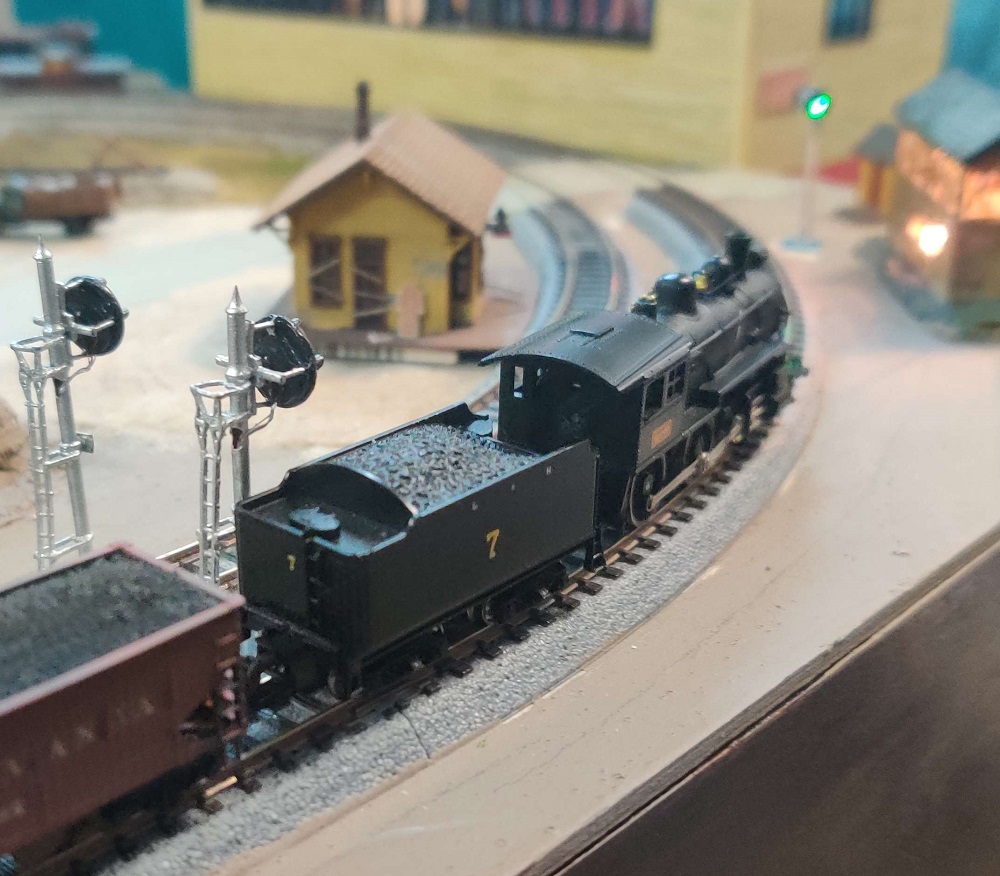On Sheet – TT&MMI
On Sheet – TT&MMI
 ou’ve all heard me go on endlessly about TT&TO (Time Table and Train Order). I love the idea that the operators are forced to put more skin in the game, to read their rules, understand how the railroad works, and consider what moves they will make.
ou’ve all heard me go on endlessly about TT&TO (Time Table and Train Order). I love the idea that the operators are forced to put more skin in the game, to read their rules, understand how the railroad works, and consider what moves they will make.
On my Tuscarora Branch Lines, we do run TT&TO with pre-printed orders. My operators will hoop them but will not consider what they say sometimes. For example, in the session last week, we had an extra coal movement departing Easton (the eastern end of my little division). Right behind him was a scheduled train, running ten minutes late because of the delaying coal train. In a nutshell, that coal train was running on his time, a TT&TO sin! Now, there is no way to pass them at Easton. Since I was holding down the station operator position at Tuscarora, I prompted the dispatcher (new at his job) to issue an order reading “EXTRA XXXX RUN AHEAD OF TRAIN YY EASTON TO TUSCARORA”. This way, the extra knew it could run ahead of the scheduled train, and should have known it needed to get out of the way at Tuscarora. But he only glanced at his order, didn’t consider that his rights ended at Tuscarora, and rolled right through (the interlocking agent even gave him a green, and I’ve admitted I should have told him what the expectations were here). So we dropped the red train order board on him before his caboose passed and forced the conductor to use his PRR radiophone to call for a stop. After he’d backed up, the freight ran past him and went ahead – as he should have.

No orders for this train – the train order board is green!
And that’s why I love TT&TO.
Then there is “Mother May I” operations where some central authority figure plays dispatcher and tells people exactly what to do. “Frank, run the extra to this siding. Joe, take the station track at Bethlehem.” This is where every operator usually start his operation efforts when new to this, and there is nothing wrong with that.
Right now, I run on two railroads that do a form of TT&MMI railroading, a combination of the two. In this, you have a sequence of train movements directed by a timetable. The owner (or dispatcher) has the ability to communicate changes to this (usually because of delayed or extra trains). It’s fine. It’s easy and fun.
But maybe, just maybe, you should look at TT&TO proper. Possibly you can figure ways to add little bits of realism to your operations. For example…
- Handwritten orders placed at stations for crews to pick up.
- A person acting as station operator at one or more stations, relaying dispatcher orders to specific trains.
- Giving the crews more ability to follow their timetable, including taking the main and siding depending on the superiority/inferiority of their trains vs. the train they are meeting.
- Registry books at any place a train enters/leaves your modeled division, so that crews are aware of what they should be waiting for before setting out.
These are just some of the ideas you can consider when stepping up your ops game. After your next MMI session, sit down with your operators and see what they’d like to do beyond using a timetable as a sequence of operations. Maybe there are folks that would like do direct (i.e. dispatch) or sit in a station OSing and reporting passing trains. Maybe your crews would like to run with some sort of pre-formatted orders (or even checkbox orders, as I’ve talked about HERE in another blog). Sometimes shooting the poop with your operators will give you some interesting ideas.
Anyway, the entire point of this blog is simply this: You don’t have to run every rule in the rulebook to simulate railroading. It’s your railroad. You can run it any way you want (and hopefully to the interest of your operators). Figure out a happy medium but keep advancing your skills. There is no reason you have to spend a decade or two MMIing about the basement. Explore. Advance. See what happens!
